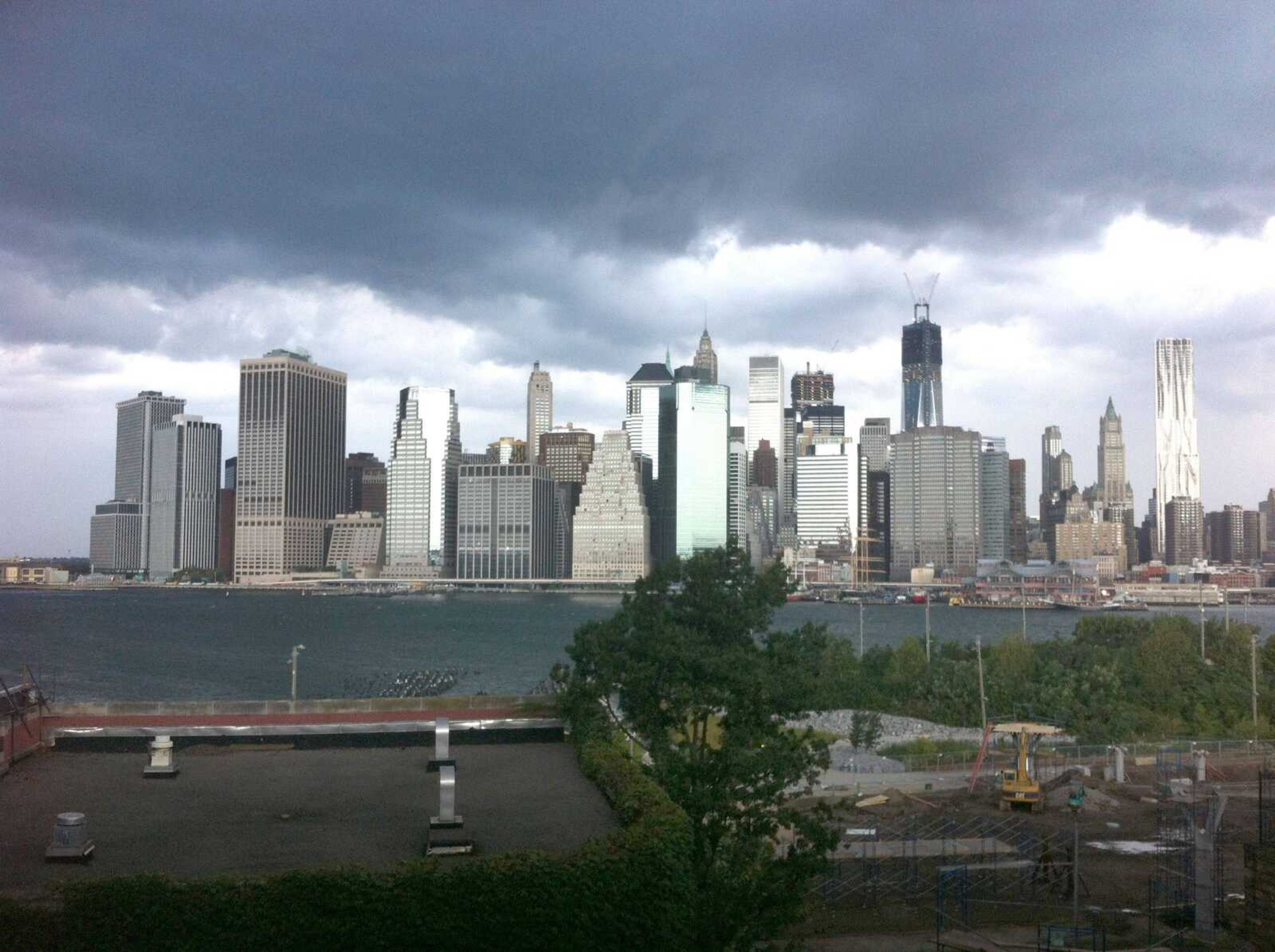Images, not frequency, make N.Y. twisters notable
NEW YORK -- Most people wouldn't say New York and tornado in the same breath. But two twisters that touched down in the nation's biggest city Saturday are the latest of about 60 small tornadoes that have hit the area in the past half-century, the years for which complete data are available. Saturday's pair brings to 10 the total number of tornadoes since 2007 in New York City, according to the National Weather Service...
NEW YORK -- Most people wouldn't say New York and tornado in the same breath.
But two twisters that touched down in the nation's biggest city Saturday are the latest of about 60 small tornadoes that have hit the area in the past half-century, the years for which complete data are available. Saturday's pair brings to 10 the total number of tornadoes since 2007 in New York City, according to the National Weather Service.
To some, the tornadoes of the past few years might appear to be an uptick in the trend. Not so fast, said meteorologist David Stark of the weather service.
"In the past five years, there's been a slight increase in the number of tornadoes in the area, but it's too short a period of time to say it's a growing trend," Stark said.
He pointed to the previous five years, 2001 to 2006, when a total of eight twisters were recorded.
"That's not to say the touchdowns are going to continue at the same pace," Stark said. "It's up and down, up and down, and it's not uncommon in the late summer months to see this."
So if the tornadoes in recent years were not unusual, why, then, were they memorable?
Part of the answer may lie in New Yorkers' pockets and handbags, where in recent years many have had a camera close at hand, thanks to ever-evolving cellphone technology. And the rise in social media offers a quick way to spread images and footage of funnel clouds or of winds up to 110 miles per hour wreaking havoc on neighborhoods -- as was the case in Brooklyn and Queens on Saturday.
In addition, Stark said, people know of storms much earlier than in the past because of technology that picks up atmospheric instabilities, especially the Doppler radar in use since the 1980s. That means they can prepare for storms earlier, whether that means ducking into the basement or just being aware enough of the weather to consider snapping a picture.
On Saturday, a dark funnel descended on the Breezy Point Surf Club in Queens, flooding nearby roads, mangling power lines and later forcing more than 20,000 spectators to be evacuated from the U.S. Open tennis tournament a few miles away.
It took only a few minutes for the 70 mph wind and roaring water to rip through walls and lift roofs off homes, while sending beach chairs flying and lifting kayaks out of the water. And it didn't take much longer for images of the storm to appear online.
Saturday's second tornado hit Brooklyn's Canarsie neighborhood, whipping up winds of 110 miles per hour over a half mile, snapping trees and house awnings and breaking windows.
On Sunday, power had been restored for the more than 1,100 customers in New York who had lost it.
No deaths or injuries were reported as a result of the twisters, coming from a storm system that brought damaging winds from Pennsylvania to upstate New York.
By comparison, hundreds of people died in 2011 in a part of the country dubbed "Tornado Alley," running through the nation's Midwest and South.
Connect with the Southeast Missourian Newsroom:
For corrections to this story or other insights for the editor, click here. To submit a letter to the editor, click here. To learn about the Southeast Missourian’s AI Policy, click here.










